I got given an old Atlas/Kato RS3 Boston & Maine in pieces, once back together and running, all kinds of memories flooded back. Back in my mid teens I had a single Athearn UP GP38-2 blue box era engine, ran nice and smooth but had that typical growl that many vintage Athearns are known for. Then when I joined the local HO club that was operation based and set in the year 1966, I needed a new engine that I could run on the layout. I joined right before my 16th birthday and when I wasnt looking my dad had spoke to one of the other members to find out what to get me. I got a yellow box Atlas Alco RS3 in Norfolk & Western blue with what I would later learn about drive system from Kato in Japan. This was before Kato went out on thier own under thier own name in the USA. The detail level was good for the era, yes lots of cast on grab irons ect, but they had excellent lighting and were super smooth and super quiet. It was also with this model that I got introduced to Kaydee brand couplers(another requirement for running on the club layout). This was many years ago(just turned 44 a couple weeks ago!) but those model still run better than some on the market today. While the detail isnt up to today’s standards for many, for someone who is autistic and has body/space judgement issues(cant judge distance well) and will stub his fingers into the model instead of grasping like I want, this is less to break off. The smoothness and coasting of a factory model with no modifications still beats many models on the market and at a much cheaper price. You can get these for under $50 many times at shows if you shop wisely. The EMD engines in the yellow box(and the S2 switcher) have drives by Roco in Austria. They are smooth but not silky smooth and quiet like the Kato drive. When Atlas reissued the Alco’s from thier Chinese mfg plant, the drives were clones of the Kato version, right down to the truck design. Lots of free standing grab irons bu
I’ve got quite a few Atlas “yellow box”. They run great! I’m always looking for them. The Japan made, go for $80 or more on Ebay. I missed one a few days ago, it was starting out at $30. It ended up going for $43.80 ! [banghead] I wasn’t around when bids ended.
Mike.
I recently bought 2 yellow box Atlas/Kato SCL RS11s. I also have 2 yellow box GP7s custom painted for SCL. I also have a custom painted yellow box RS1.
Those oldies are still goodies.
Yes indeed I do remember - guys who bought those early Atlas engines could not resist showing off that “lack of noise” – we had all become simply accustomed to gear noise of one kind or another (perhaps I should say motor and drive train noise since the gearless Athearn Hi-F rubber band drive engines were noisy too) and these Atlas things ran like Swiss watches it seemed. Their lack of noise was deafening! It raised the bar and raised expectations.
One other thing - remember when the Atlas FP7 was new (also Kato I believe) and guys who mated that Atlas F unit with one from Athearn or Varney or Mantua or Revell or (name the brand) quickly realized that the roof curve contours did not “agree” - and moreover it seemed like Atlas had them right (or at least, more right) and the others were wrong. It was early in an era of a “new fussiness” about correctness that obviously has continued to this day.
Dave Nelson
The FP7 was a Roco drive, I forgot that one as well. Most of the drive noise in the Athearns is from the flywheels being poorly drilled/ballanced and brush/armature noise. A replacement set of Timewell flywheels and running the motor under water with test leads(removed from the chassis), yes under water(old RC car racing trick to bed in a motor) would silance the Athearn noise for the most part. But to get silent performance right from the box was unheard of back when the first Atlas with the Kato drives hit the market. Was very hard to get certian road names, or the 2nd road number was almost nearly impossible unless you got it when it first came out. We ran the Kato drive engines in 2-5 unit lash ups on the club layout to handle unit coal drags up the rulling 4% grade. It would take 4 or 5 units to climb the hill. Several had brass plates mounted the plastic catwalk/pilot assembly to stiffen them so the coupler wouldn’t climb up under heavy load. Good working headlights, even at slower speeds was also about unheard of when they came out. Most were dim or lit up the whole darn cab like most Athearns! Mike
The Roco-drive FP7’s run smoothly. … My Union Pacific passenger train has a pair of them. These are the only yellow box Atlas locomotives remaining in my locomotive roster. I did convert them to non-sound DCC, and that was easy to do
I picked up a pair of O scale F9’s last year for less than $100 the pair. They run very well.
As I find them, I’m buying cars, cabooses, and WDT switchers as well.
They’re an inexpensive way to tinker with O scale.
Paul
Are the Atlas Yellowbox loco’s the early releases?
When I was in junior high school I asked for an Atlas GP40 for Christmas so I could have a modern locomotive for my layout. Both of my locomotives and most of my rolling stock were Tyco. The locomotives were F7s. To this day it is still my favorite locomotive. I now have two of them. Most of my other locomotives are Athearn or Walthers.
Here is a picture when it was new on my first layout. !http://www.trainweb.org/lonewolfsantafe/1978.jpg
Below is a recent picture, almost 40 years later. It has had some detail parts added.
Yes, the yellow/white boxes were the earliest releases of HO scale Atlas diesel locomotives. Early ones were Roco drives, then when the Alco RS series came out, the drives were by Kato. They were the finest running HO scale diesels on the market at that time. Better than brass of the time and smoother and quieter right out of the box from the factory. The Kato drive was cloned, as was the Athearn drive in the earliest Proto 2k engines. The later Atlas classic reissues of the earlier models have a clone of a Kato chassis in them. All one has to do is flip it over and look at the trucks, identical other than missing the name ''Kato" on the bottom gear case. Mike
I remember the Atlas yellow box era loco’s and no, didn’t really love them after better alternatives came out.
Firstly, not all Atlas yellow box were created equal.
- Atlas yellow box GP40’s: I had 3 with them - they had the Roco chassis which was decent at the time but the fuel tank was mishaped and had a big ugly slot in on either side; to install KD couplers took an evening of filing the insides of the boxes so the #7 box would fit. They ran ok not as good as the Kato drive RS3 and GP7. When Atlas came out with the red box GP40, I sold off all my yellow box GP40’s.
The only other yellow box Atlas I had were two GP7’s and an RS3 - they did have the KATO drives and that was the best thing about them However the D&RGW GP7 version looked dark gray rather than black and the orange was a rather reddish orange. I sold them over 12 years ago.
I did have an RS3 and it was a nice runner but the front pilot corners were extremely fragile broke off really easy and even though it was a nice engine, D&RGW sold theirs off by about 1965 and I model after that time frame so I sold it.
I almost bought an Atlas yellow box FP7 WP but it didn’t look quite right - nearly impossible to set it up for close coupling, the side grills didn’t look right and the number boards were this funky clear plastic insert. At the time the Stewarts F units were out and the Atlas FP7 didn’t hold up so well after seeing those, so I waited for the Athearn Genesis version.
I’m not really nostagic for the Atlas yellow box loco’s - I see lots of them in train shows for sale. Yes, Atlas was a head of the curve back then but they have improved so much on them since the red box er
I have about a half dozen of them, 4 RS-3’s and 2 RS-1’s and they all still run like champs. Two of them about 20 years ago got drenched in a pipe leak and I thought they were ruined. Took the bodies off, let them dry out, relubed them and they are still running today like nothing ever happened to them.
I have never had issues with the corners of the pilots on the Kato drive Atlas’s breaking, but I do have issues with the fragility of most all newer models. Most all of us at this club, which only shut down in the last couple years, took models to and from the club as we simulated “interchange” between our own home model railroads and the club layout. Most of the newer engines from Proto, Atas Classic reissues, Athearn Genesis and newer RTR line looked worse for wear with broken handrails and grab irons missing or hanging on by one end. Not so with the older Atlas engines. They are still the main stay of most of the interchange trains that go between various home layouts and the delicate newer engines are “hands off” once on the layout. I will take all the older Atlas’s with the Kato drive I can get. And off color paint jobs just beg to be weathered up, or repainted. Yes a few of the early paint jobs were off, and it wasn’t just Atlas missing the ball here and there. Mike
Jim,I’ll put my Yellow box RS-1s RS11s,RS3s and the GP7s up against any locomotive made today as far as smooth running…I add my Atlas /Roco S-4s as well.
Back then Atlas smacked a out of the park home run with those engines.Nothing could match their silky smooth drive…
Fixed the quote - the drives were great, no disagreement there.
It’s just too bad we can’t have the best of both worlds, those Kato drives with the well done and painted body shells. Btw, I’ve kept my ten Stewart F units because they have those silky smooth Kato drives.
I had a bunch of the SD24s…
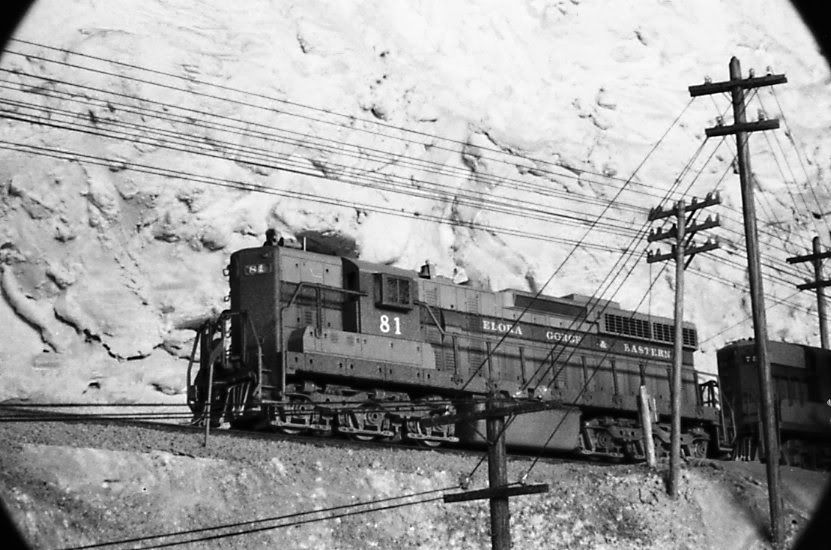
…and SD35s…
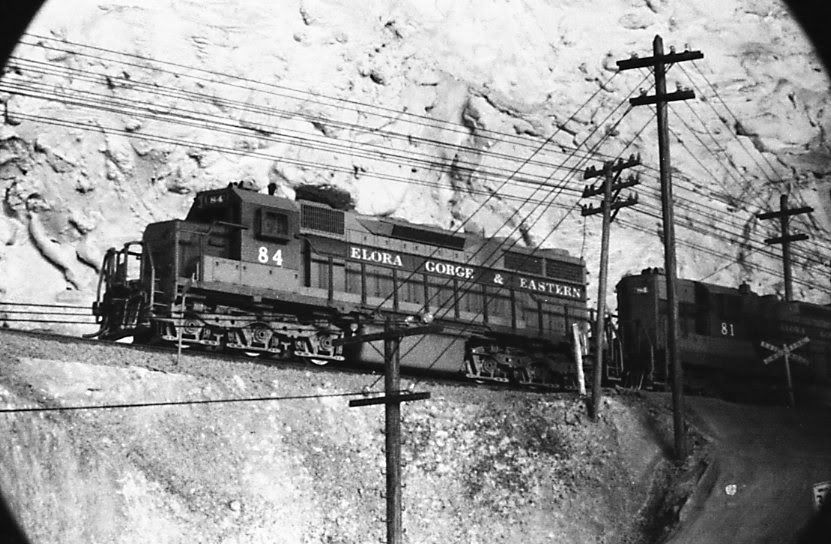
and also some of both re-worked with scratchbuilt safety cabs…

I also had a modified and custom-painted RS-3, but it now resides with a good friend…
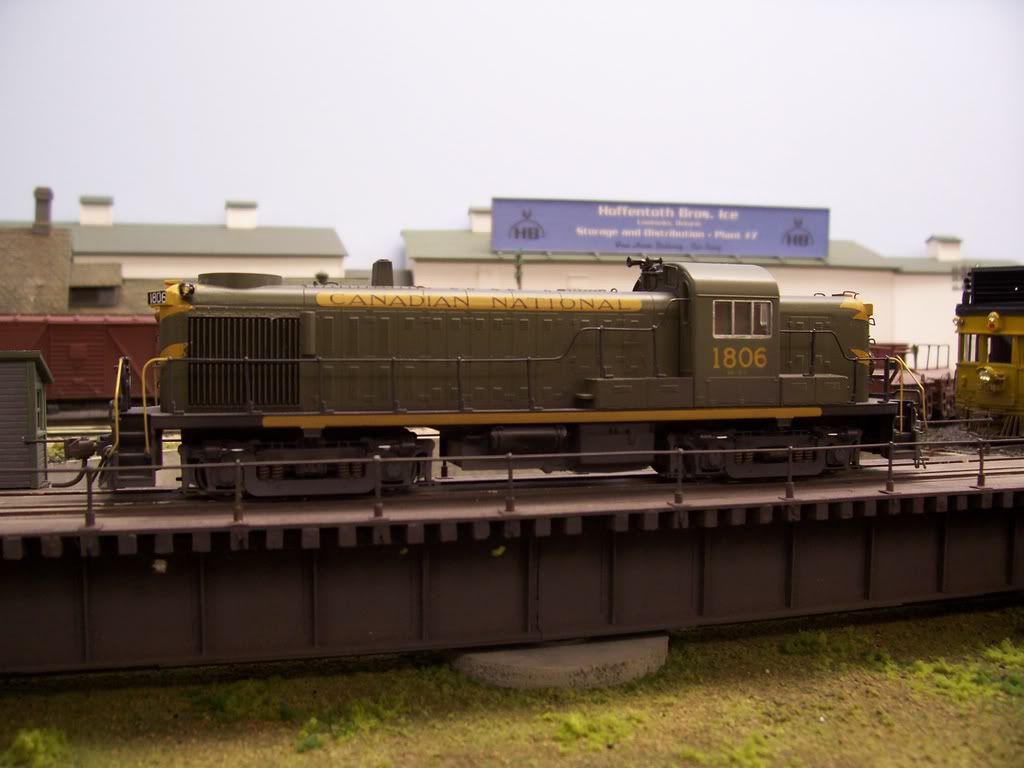
I still have this Austrian-built S-2…
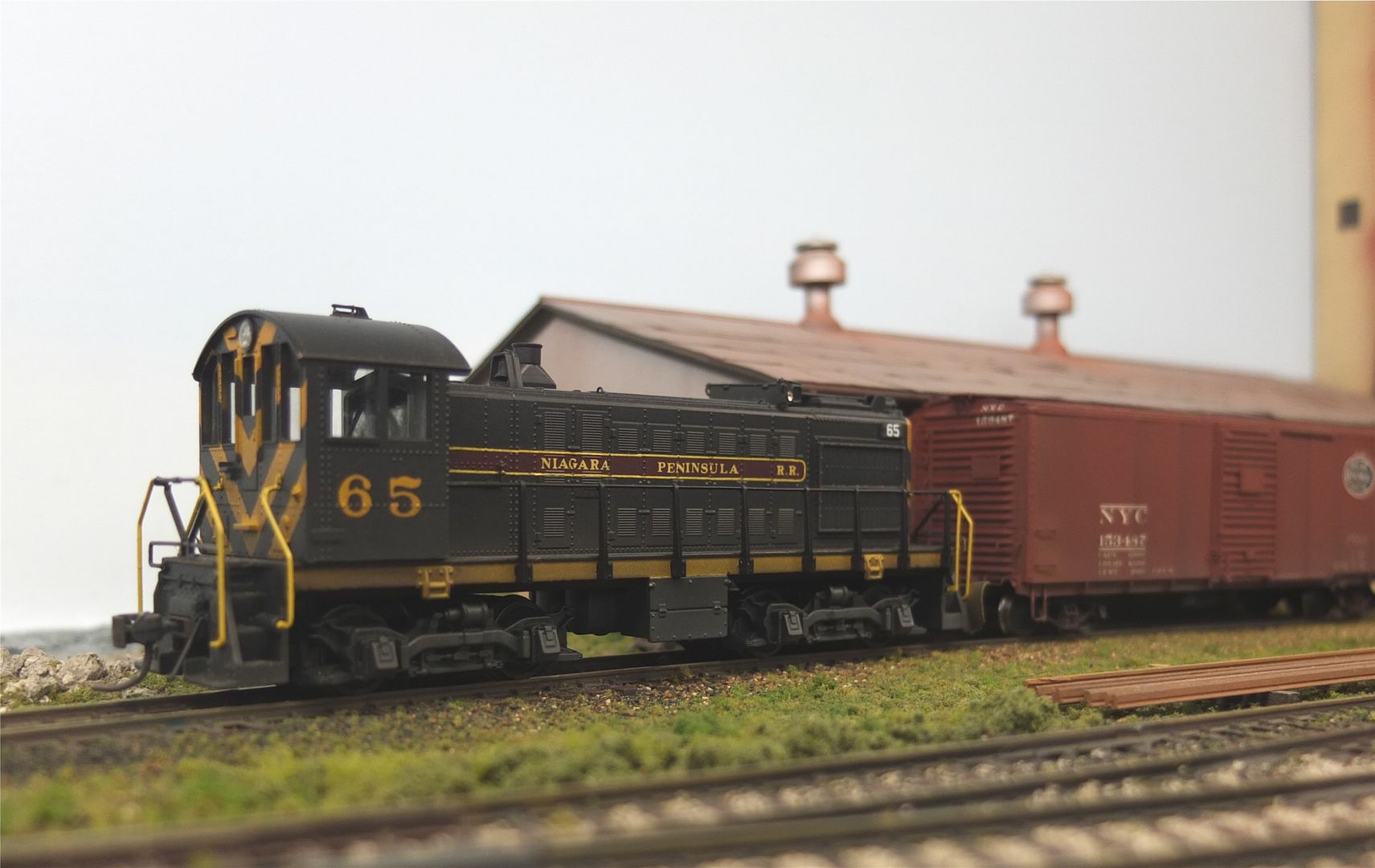
…and this Japanese-built C-425…
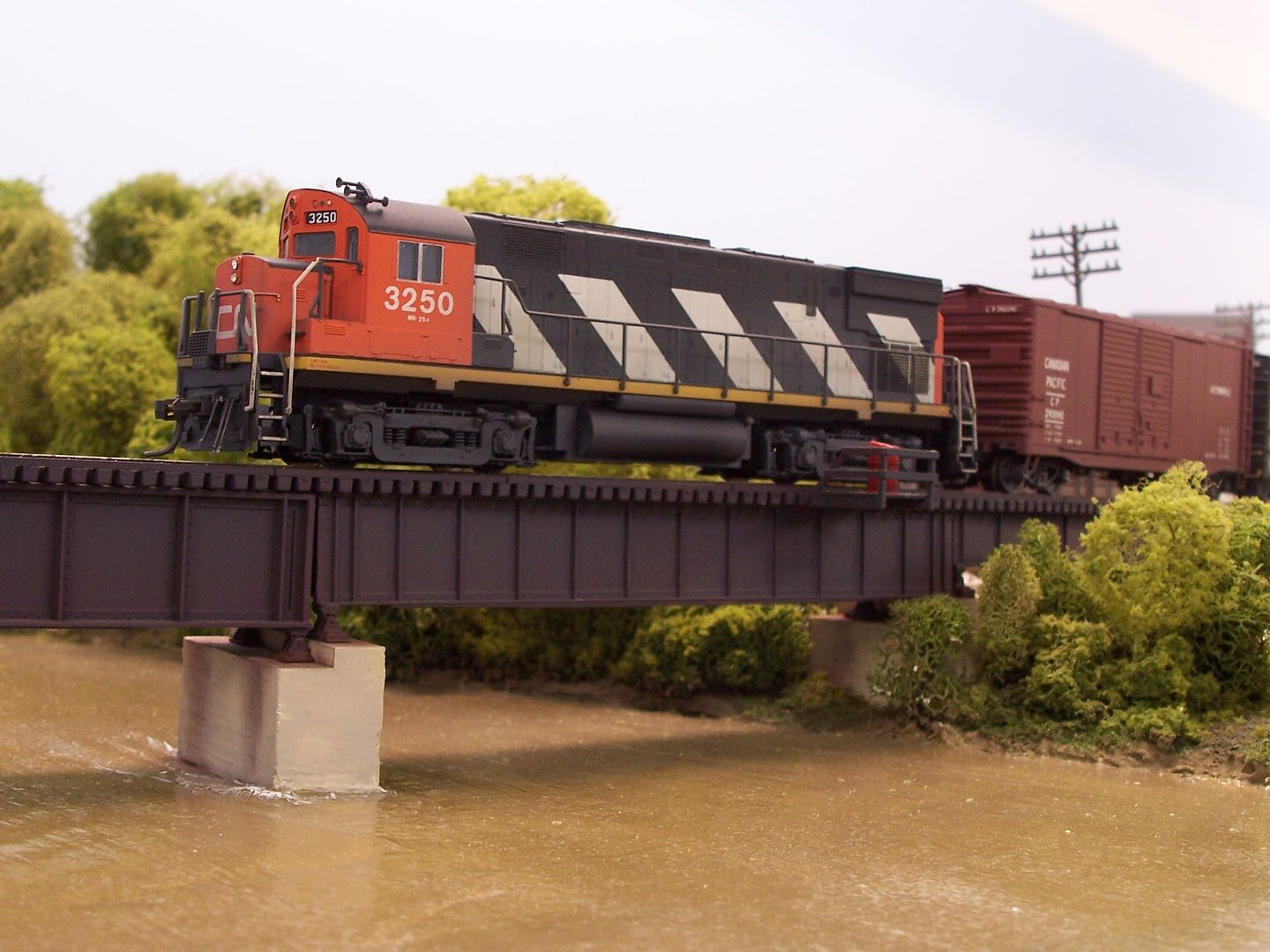
All were great runners, and all but the last two are long gone to other owners. The C-425 needs a new home, too, but it’s unlikely to happen - despite the custom CN paint job, CN never owned a C-425, even though they had quite a few C-424s.
Both see use for initial testing of newly-laid track, and when the younger grandkids want to “run some trains”. [swg]
Wayne
I remember I only bought Athearn blue box locos, anywhere from $18.28 to $26.50, a teenagers budget. Then one day I saved up for one of those yellow/white box Atlas PRR RS11 made in Japan Kato drive locos. for $39.99 and when I ran it on my track glued to the floor layout, yep mom did not know about that, I just about passed out, it was super quite, I thought I lost my hearing and it ran as smooth as silk, had to save more money, cut lots of grass. I’ll have to say I do not think I bought another blue box Athearn loco. for a long time, years. I also have some Atlas SD24s made in Austria.
Thanks for reminding me of those. [:)]
I had two, and each got paired with an old LifeLike (Proto-no-thousand) RS-11, both of which had had their motors removed. They had also been re-detailed with free-standing wire grabirons and metal handrails.
Here’s the four of them together, with a LifeLike leading, and one of the Atlas ones right behind it…

…and an Atlas S-4, in the same paint scheme…
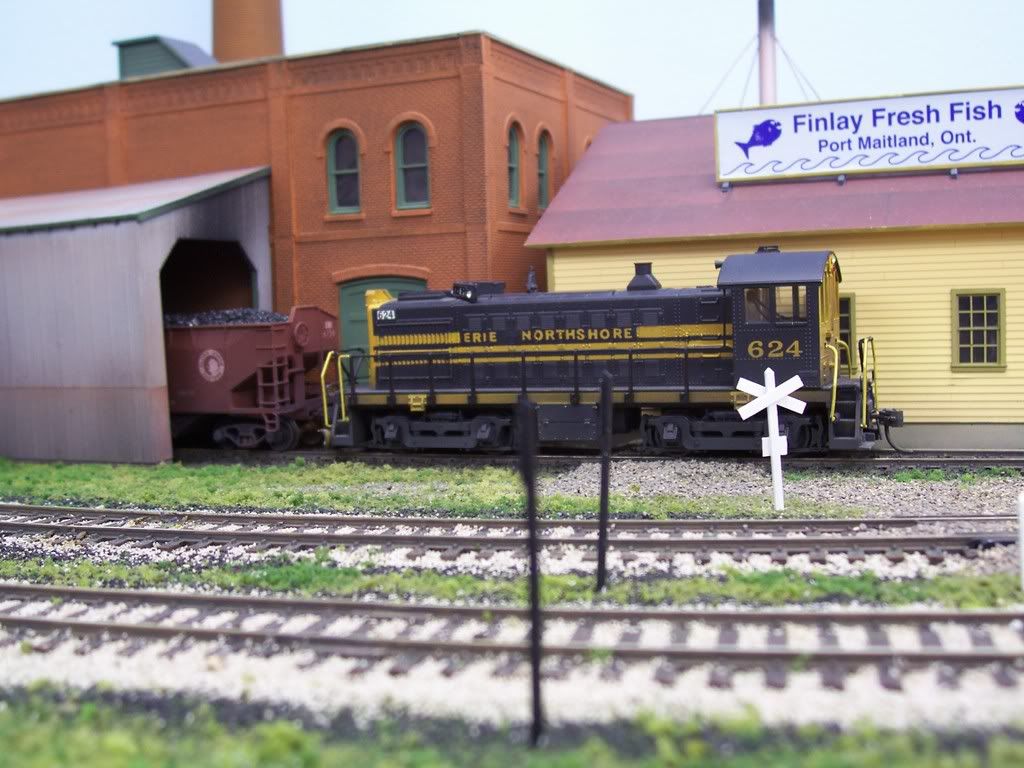
Wayne
i scored a Conrail RS11 off the “made a donation” table They had a pile of locomotives and among them were two Kato drive Atlas’s The one I got an a black SP&S RS1. Should have grabbed that on to but I let another modeler have that unit. The Conrail is more east coast power and fits in better with my B&M RS3. Need to see if Atlas ever offered the B&M RS3 in two road numbers in the Kato drive era. Mike
Wayne … I’m impressed with your outstanding photos.
When I posted earlier, I mentioned my two remaining FP7’s are the last of the Atlas yellow box locomotives remaining on my roster.
That was not true actually. I was only thinking of Atlas/Roco models, and I was not thinking of Atlas/Kato models.
I have one Atlas/Kato
GP7 in the C&NW 400 paint scheme, and I use it to interchange with my CB&Q.
I also have two Atlas/Kato RS3’s which are detailed and lettered for Northern Pacific. They are weathered also.
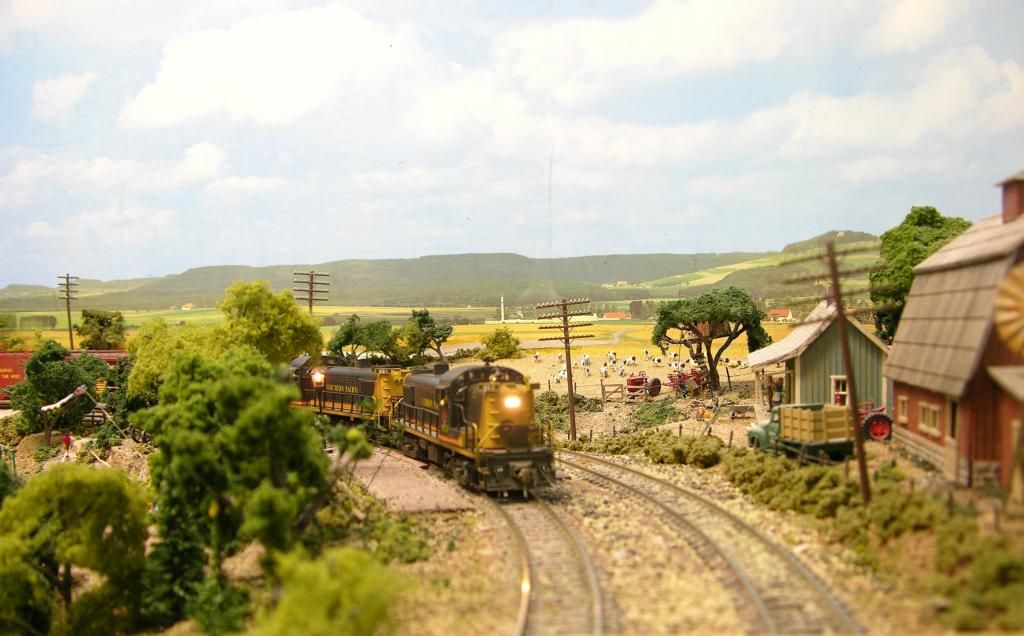
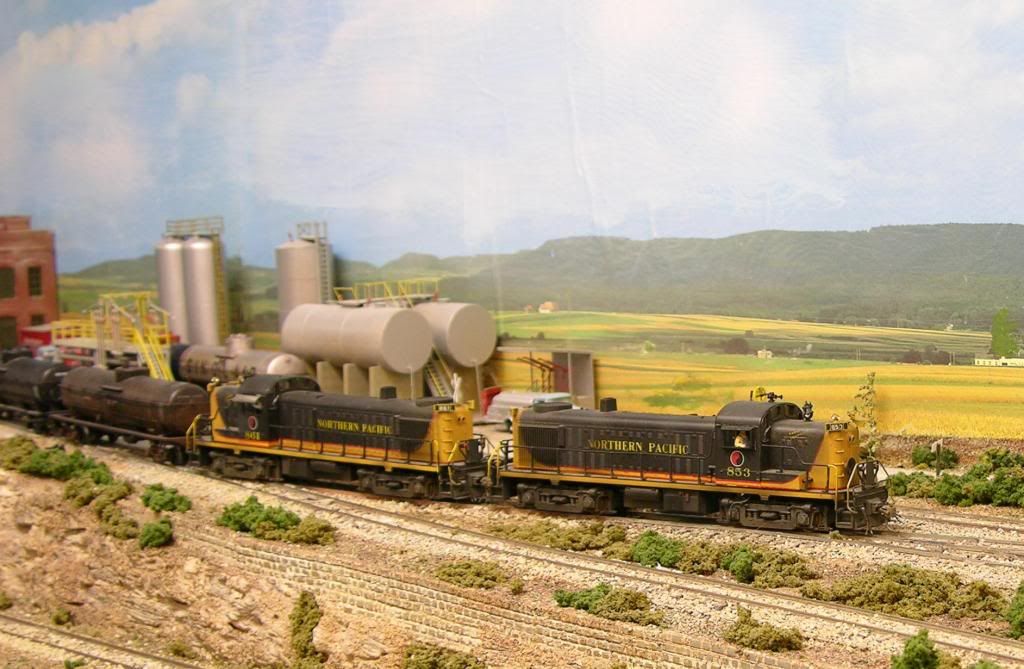
I had once owned 6 Atlas/Roco FP7’s in three road names.
I also once owned 3 Atlas/Roco SD24’s. I replaced them with Atlas Silver series SD24’s and installed Sountraxx sound decoders in them.